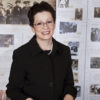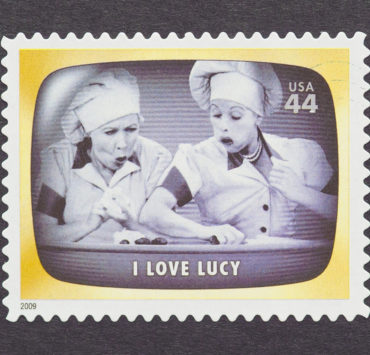Women Whose Books Became Movies

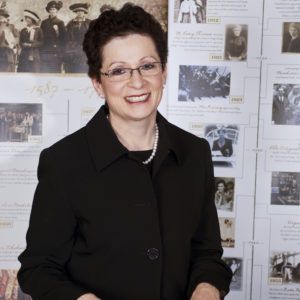
Jill S. Tietjen, PE, is an author, national speaker, and…
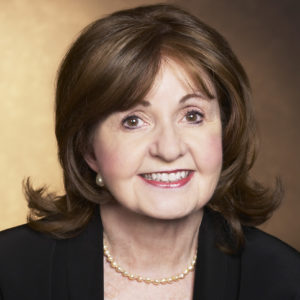
Charlotte S. Waisman, Ph.D. is a national champion and advocate…
Sometimes we’ll read a book or hear a story and think: “This ought to be made into a movie.” There are quite a number of women authors whose books have been made into movies – movies that we know and love! In this month’s column, we discuss the authors of some of these books, as well as the movies that resulted from their creative efforts.
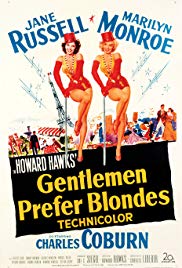 A screenwriter, playwright and author, Anita Loos’ 1925 book Gentlemen Prefer Blondes became a bestseller. The stage adaptation, which she wrote, opened in 1926. The silent film era movie for which she wrote the titles and screenplay was released in 1928; it did not achieve much success. The stage version of Gentlemen Prefer Blondes was reworked to become a musical that opened on Broadway in 1949 starring Carol Channing. The movie version of the musical opened in 1953. It achieved much greater success than the silent film era version and starred Jane Russell and Marilyn Monroe. Later in her life, Loos wrote columns that appeared in magazines such as Harper’s Bazaar, Vanity Fair and The New Yorker.
A screenwriter, playwright and author, Anita Loos’ 1925 book Gentlemen Prefer Blondes became a bestseller. The stage adaptation, which she wrote, opened in 1926. The silent film era movie for which she wrote the titles and screenplay was released in 1928; it did not achieve much success. The stage version of Gentlemen Prefer Blondes was reworked to become a musical that opened on Broadway in 1949 starring Carol Channing. The movie version of the musical opened in 1953. It achieved much greater success than the silent film era version and starred Jane Russell and Marilyn Monroe. Later in her life, Loos wrote columns that appeared in magazines such as Harper’s Bazaar, Vanity Fair and The New Yorker.
 Novelist Pearl Buck lived primarily in China until she was in her forties. Her Pulitzer Prize-winning novel, The Good Earth, describes Chinese life in the early 20th century. It was the best selling fiction book in the U.S. in 1931 and 1932. The movie, The Good Earth, was released in 1937 starring Luise Rainer. She won a Best Actress Oscar for playing the role. The screenplay was in part written by future Oscar-nominee Tess Slesinger. The movie also won in the category of Best Cinematography and received nominations in the categories of Best Picture, Best Director and Best Film Editing. The first American woman to receive the Nobel Prize in Literature, Buck was honored in 1938 in recognition “for her rich and truly epic descriptions of peasant life in China and for her biographical masterpieces.” Buck has been inducted into the National Women’s Hall of Fame.
Novelist Pearl Buck lived primarily in China until she was in her forties. Her Pulitzer Prize-winning novel, The Good Earth, describes Chinese life in the early 20th century. It was the best selling fiction book in the U.S. in 1931 and 1932. The movie, The Good Earth, was released in 1937 starring Luise Rainer. She won a Best Actress Oscar for playing the role. The screenplay was in part written by future Oscar-nominee Tess Slesinger. The movie also won in the category of Best Cinematography and received nominations in the categories of Best Picture, Best Director and Best Film Editing. The first American woman to receive the Nobel Prize in Literature, Buck was honored in 1938 in recognition “for her rich and truly epic descriptions of peasant life in China and for her biographical masterpieces.” Buck has been inducted into the National Women’s Hall of Fame.
 A former journalist, Margaret Mitchell wrote one novel, Gone with the Wind. It not only won her the 1937 Pulitzer Prize in Fiction Award, in that same year, Mitchell sold the motion-picture rights to David Selznick. Mitchell had begun the novel in 1926 when she was recuperating from an ankle injury; she refined the novel over the next nine years. Gone with the Wind has sold more than 30 million copies and been published in 40 languages. The 1939 movie starred Vivien Leigh as Scarlett O’Hara and Clark Gable. The movie won eight of the thirteen Oscars for which it was nominated, including Best Supporting Actress for Hattie McDaniel. The movie was filmed with movie lenses using the nonreflective glass recently invented by physicist Katherine Blodgett. Mitchell intended to write another novel but tragically died before she was able to do so.
A former journalist, Margaret Mitchell wrote one novel, Gone with the Wind. It not only won her the 1937 Pulitzer Prize in Fiction Award, in that same year, Mitchell sold the motion-picture rights to David Selznick. Mitchell had begun the novel in 1926 when she was recuperating from an ankle injury; she refined the novel over the next nine years. Gone with the Wind has sold more than 30 million copies and been published in 40 languages. The 1939 movie starred Vivien Leigh as Scarlett O’Hara and Clark Gable. The movie won eight of the thirteen Oscars for which it was nominated, including Best Supporting Actress for Hattie McDaniel. The movie was filmed with movie lenses using the nonreflective glass recently invented by physicist Katherine Blodgett. Mitchell intended to write another novel but tragically died before she was able to do so.
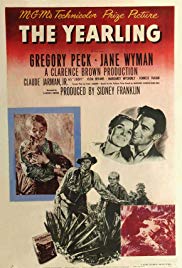 Marjorie Kinnan Rawlings lived in rural Florida and wrote novels with rural themes and settings. Her 1938 novel, The Yearling, about a boy who adopts an orphaned fawn, received the 1939 Pulitzer Prize in Fiction. MGM purchased the motion picture rights and the movie was released in 1946. It made Rawlings famous. Gregory Peck and Jane Wyman played the parents. The movie won Oscars for Best Cinematography, Color and Best Art Direction – Interior Decoration, Color. Jane Wyman was nominated for Best Actress and Gregory Peck was nominated for Best Actor. The other Oscar nominations were in the categories of Best Film Editing, Best Director and Best Picture.
Marjorie Kinnan Rawlings lived in rural Florida and wrote novels with rural themes and settings. Her 1938 novel, The Yearling, about a boy who adopts an orphaned fawn, received the 1939 Pulitzer Prize in Fiction. MGM purchased the motion picture rights and the movie was released in 1946. It made Rawlings famous. Gregory Peck and Jane Wyman played the parents. The movie won Oscars for Best Cinematography, Color and Best Art Direction – Interior Decoration, Color. Jane Wyman was nominated for Best Actress and Gregory Peck was nominated for Best Actor. The other Oscar nominations were in the categories of Best Film Editing, Best Director and Best Picture.
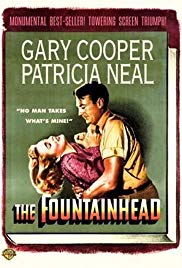 Ayn Rand’s classic novel, The Fountainhead, was released in 1943 after she worked on it for seven years. That same year she sold the film rights to Warner Bros. and was hired to write the screenplay. The movie was released in 1949, was directed by King Vidor and starred Gary Cooper and Patricia Neal. Even though Rand wrote the screenplay herself, she was highly critical of the film. Then she changed her mind and said that “The picture is more faithful to the novel than any other adaptation of a novel that Hollywood has ever produced.” Rand’s novel, Atlas Shrugged, published in 1957 is considered her greatest work, and was her last completed work of fiction. A 1991 survey conducted by the Library of Congress and the Book-of-the-Month club revealed that Atlas Shrugged was deemed the second most influential book among adults, after The Bible.
Ayn Rand’s classic novel, The Fountainhead, was released in 1943 after she worked on it for seven years. That same year she sold the film rights to Warner Bros. and was hired to write the screenplay. The movie was released in 1949, was directed by King Vidor and starred Gary Cooper and Patricia Neal. Even though Rand wrote the screenplay herself, she was highly critical of the film. Then she changed her mind and said that “The picture is more faithful to the novel than any other adaptation of a novel that Hollywood has ever produced.” Rand’s novel, Atlas Shrugged, published in 1957 is considered her greatest work, and was her last completed work of fiction. A 1991 survey conducted by the Library of Congress and the Book-of-the-Month club revealed that Atlas Shrugged was deemed the second most influential book among adults, after The Bible.
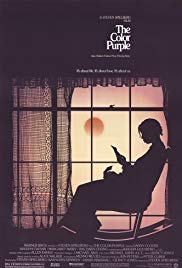 Novelist, short story writer, poet, and social activist Alice Walker received the 1983 Pulitzer Prize as well as the National Book Award, for her 1982 novel The Color Purple. The novel takes place in Georgia and focuses on the lives of African-American women. The movie was released in 1985 and received eleven Oscar nominations including a Best Actress nomination for Whoopi Goldberg and two Best Supporting Actress nominations for Oprah Winfrey and Margaret Avery. Walker was instrumental in the resurgence of knowledge related to Zora Neale Hurston, an African-American writer and anthropologist. Walker coined the term “womanist” meaning a black feminist or a feminist woman of color.
Novelist, short story writer, poet, and social activist Alice Walker received the 1983 Pulitzer Prize as well as the National Book Award, for her 1982 novel The Color Purple. The novel takes place in Georgia and focuses on the lives of African-American women. The movie was released in 1985 and received eleven Oscar nominations including a Best Actress nomination for Whoopi Goldberg and two Best Supporting Actress nominations for Oprah Winfrey and Margaret Avery. Walker was instrumental in the resurgence of knowledge related to Zora Neale Hurston, an African-American writer and anthropologist. Walker coined the term “womanist” meaning a black feminist or a feminist woman of color.
 Novelist, editor, professor, and essayist Toni Morrison was also the recipient of the Pulitzer Prize. She received the award in 1987 for her novel Beloved. Later she would receive the Nobel Prize in Literature, the first black woman to receive the award. The citation included “who in novels characterized by visionary force and poetic import, gives life to an essential aspect of American reality.” Beloved was made into a 1998 movie starring Oprah Winfrey and Danny Glover. In 2012, Morrison received the nation’s highest civilian award, the Presidential Medal of Freedom, from President Barack Obama.
Novelist, editor, professor, and essayist Toni Morrison was also the recipient of the Pulitzer Prize. She received the award in 1987 for her novel Beloved. Later she would receive the Nobel Prize in Literature, the first black woman to receive the award. The citation included “who in novels characterized by visionary force and poetic import, gives life to an essential aspect of American reality.” Beloved was made into a 1998 movie starring Oprah Winfrey and Danny Glover. In 2012, Morrison received the nation’s highest civilian award, the Presidential Medal of Freedom, from President Barack Obama.
Women participate and contribute to every area of our lives. These women authors and the movies that came from their creative works, as well as many others, almost all of whom we have not heard about nor learned about in school, across all fields of endeavor, are profiled in our book, Her Story: A Timeline of the Women Who Changed America. Help us by continuing to tell women’s stories. Write women back into history!
Author: Jill Tietjen
Jill S. Tietjen, PE, is an author, national speaker, and an electrical engineer. After 40 years in the electric utility industry, her professional focus is now on women’s advocacy, worldwide. She blogs for The Huffington Post, speaks nationally on the accomplishments of women, nominates women for awards, and continues to write books (8 published to date), following in the footsteps of her bestselling and award-winning book, Her Story: A Timeline of the Women Who Changed America (written with Charlotte Waisman). She is a frequent keynote speaker as her positive energy and her ability to relate to the audience result in inspired and energized listeners. The recipient of many awards, her induction into the Colorado Women’s Hall of Fame in 2010 remains one of her most treasured.

Jill S. Tietjen, PE, is an author, national speaker, and an electrical engineer. After 40 years in the electric utility industry, her professional focus is now on women’s advocacy, worldwide. She blogs for The Huffington Post, speaks nationally on the accomplishments of women, nominates women for awards, and continues to write books (8 published to date), following in the footsteps of her bestselling and award-winning book, Her Story: A Timeline of the Women Who Changed America (written with Charlotte Waisman). She is a frequent keynote speaker as her positive energy and her ability to relate to the audience result in inspired and energized listeners. The recipient of many awards, her induction into the Colorado Women’s Hall of Fame in 2010 remains one of her most treasured.

Charlotte S. Waisman, Ph.D. is a national champion and advocate for women as a professor and keynote speaker. A corporate leader, executive coach, and facilitator, she conducts leadership workshops nationally.

